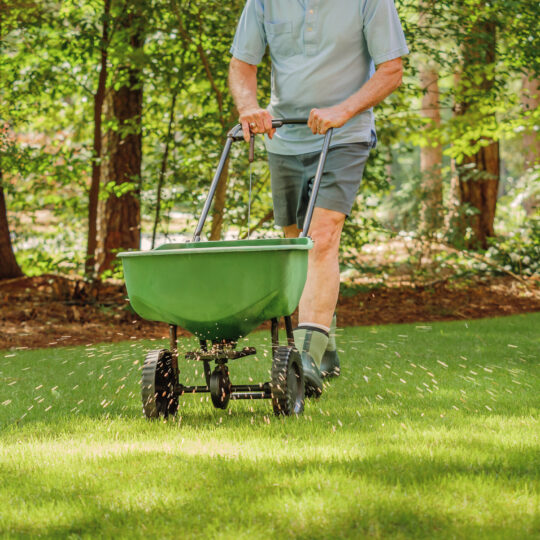16 Lawn Seeding Tips
From Soil Prep through the Seeding Process

Fall is an ideal time to help your lawn recover from the summer and prepare for the winter so it can thrive in the spring. Reseeding is one task designed to rejuvenate the grass or establish a lush, green yard. Here are some lawn seeding tips to increase the chances of successful grass growth.
Lawn Seeding Tips
How did your grass survive the summer? Are there bare or dead patches? Is it thinning in certain areas? Have weeds taken over? While summer can stress any lawn, fall is a great time to help get it back on track. The cooler temperatures and increased chance for moisture provides ideal conditions for reseeding. However, there are certain grasses that grow better this time of year.
Before you start to seed, determine what type of grass you have. Cool-season varieties like Kentucky bluegrass, fescue, and ryegrass are more partial to fall weather than warm-season grasses. You’ll want to choose the type of seed that’s better suited for your climate, conditions, and activity. Different grasses do better in shade or sun and are more durable to foot traffic than others. Once you’ve picked the perfect grass type, it’s time to start seeding.
The Seeding Process
Before you start spreading seeds, you need to test and prepare the soil. Some of these processes may take time to complete, but taking care of them properly can have a more positive impact on the results.
- Use a soil test kit to check pH and nutrient levels.
- Aerate to loosen compacted soil, allowing for greater seed-to-soil contact and root growth.
- Remove dead grass, leaves, and weeds.
- Fill uneven spots in the lawn with topsoil to create a smooth surface.
Once the soil is nutrient-rich, aerated, clear, and even, it’s finally time to seed.
- Use a broadcast or drop seed spreader for even coverage.
- Follow the product recommendations for seeding rate. Overcrowding the seeds can lead to poor growth.
- Gently rake the area to lightly cover the seeds with soil.
- You can also apply a balanced fertilizer at this time.
- Lightly cover the area with straw to prevent seeds from being washed away or eaten.
After the area is seeded, it still needs regular attention to help promote healthy growth.
- Water the newly seeded lawn lightly but consistently. The soil should be moist without puddles.
- Water regularly for the first few weeks throughout germination.
- Once the blades are a few inches high, reduce the amount of water and gradually reduce frequency to encourage deep root growth.
- Wait until the grass is about three inches high before you mow.
- About six weeks after seeding, apply a slow-release fertilizer to encourage lush, green growth.
- Avoid using chemical weed killers until the grass is established.
- Try not to walk on a newly seeded lawn.
Don’t be discouraged if germination doesn’t happen right away. Growth varies depending on grass type and weather conditions. You can help increase your chances of a lush lawn—without all the work—by contacting the lawn care experts at Shades of Green Lawn & Landscape. From renewing your current lawn to creating a brand new plot of grass, our pros can create uniformity in your yard. With our scientific approach, we can give you a healthy, vibrant lawn that will last season after season.